In this post, I share 5 benefits of teaching handwriting and offer details about my Handwriting and Letter Formation Yearlong Curriculum. Be sure to grab the FREE handwriting lessons and student handwriting printables!
Handwriting instruction: Does it still have a place in today’s elementary classrooms?
In a time when screens and keyboards dominate much of our communication, handwriting instruction sometimes feels like an “extra skill”- one that you squeeze in if your day allows you the time. However, there are tremendous benefits to providing students with explicit handwriting instruction. It remains a foundational skill all students need for literacy success beyond the early grades.
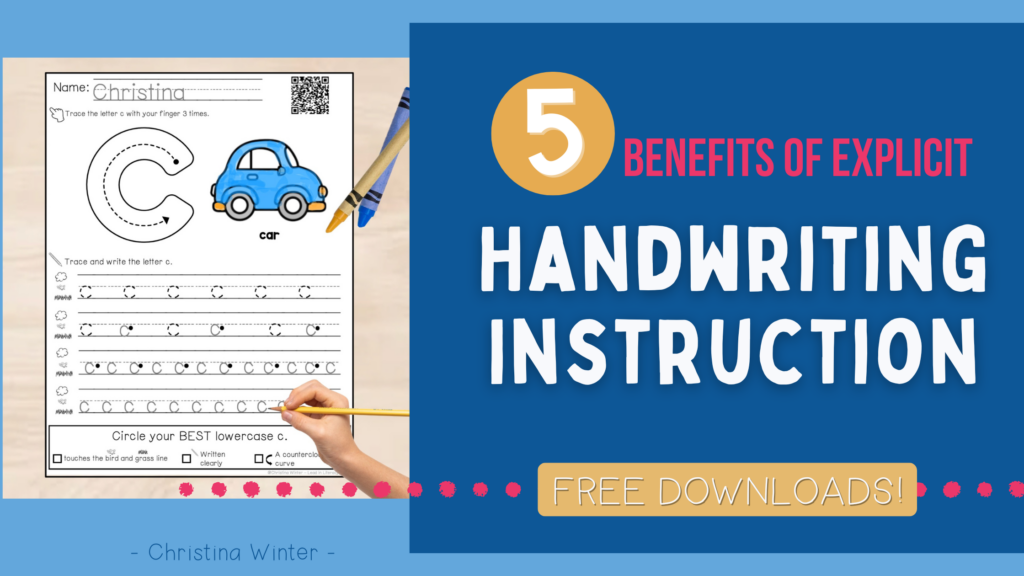
Today I am eager to share the benefits of teaching handwriting and share details about my Handwriting and Letter Formation Yearlong Curriculum -with audio! Finally, I’ll leave you with FREE handwriting lessons and student handwriting printables you can use in your classroom today!
5 Reasons to Teach Handwriting
Explicit handwriting instruction offers benefits that go beyond neat penmanship—it is foundational for developing literacy and communication skills. Let’s examine 5 reasons why every child needs explicit handwriting instruction.
1. Handwriting Instruction Improves Writing Quality and Productivity
Research consistently shows that handwriting instruction significantly improves students’ writing quality and productivity. When students develop fluency in letter formation, their cognitive load decreases, allowing them to focus on higher-level writing skills such as:
- Sentence-writing skills: Students can focus on grammar, structure, and creativity instead of struggling to form letters.
- Writing output: As handwriting becomes more automatic, students write more in less time, which enhances their ability to express their ideas fully.
2. Handwriting Instruction Strengthens the Connections Between Letters and Sounds
When students practice letter formation, they’re actively engaging with the alphabetic principle and improving their ability to:
- Recognize letter shapes: This visual recognition supports reading fluency.
- Match sounds to letters: Writing the letters strengthens the neurological pathways that match phonemes (sounds) to graphemes (letters).
- Improve spelling accuracy: The repetitive motion of handwriting helps students internalize spelling patterns.
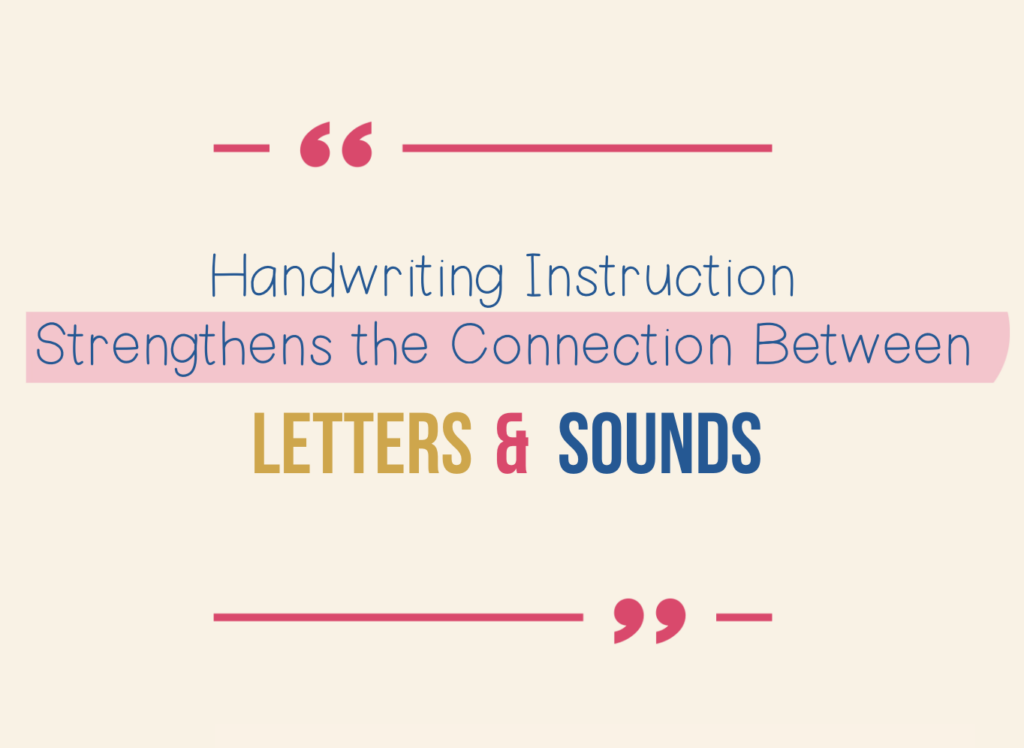
3. Handwriting Instruction Helps Students View Writing as a Communication Tool
Teaching handwriting emphasizes the importance of producing a message that others can read. It helps students understand that writing is not just about expressing their thoughts but also about ensuring those ideas are accessible to their audience. Additionally, messy handwriting can be seen as a reflection of poor effort or understanding, even if the content is strong. Bottom Line: Legibility is crucial for written communication.
4. Handwriting Instruction Builds Fine Motor Skills and Hand-Eye Coordination
Handwriting helps develop essential fine motor skills, such as the ability to control a pencil, coordinate movements, and maintain proper grip and posture. These skills support writing, as well as other tasks requiring precision, such as drawing and cutting.
5. Handwriting Instruction Activates Brain Areas Critical for Literacy
Handwriting engages specific regions of the brain associated with literacy, including those responsible for reading comprehension, letter recognition, and word processing. Writing by hand helps encode letter shapes in memory, which strengthens students’ ability to identify and decode words while reading.
A Yearlong Handwriting and Letter Formation Curriculum
Today I am thrilled to help bring explicit, systematic handwriting instruction to your classroom! My letter formation resource has everything you need to help your students master lowercase and uppercase letters!
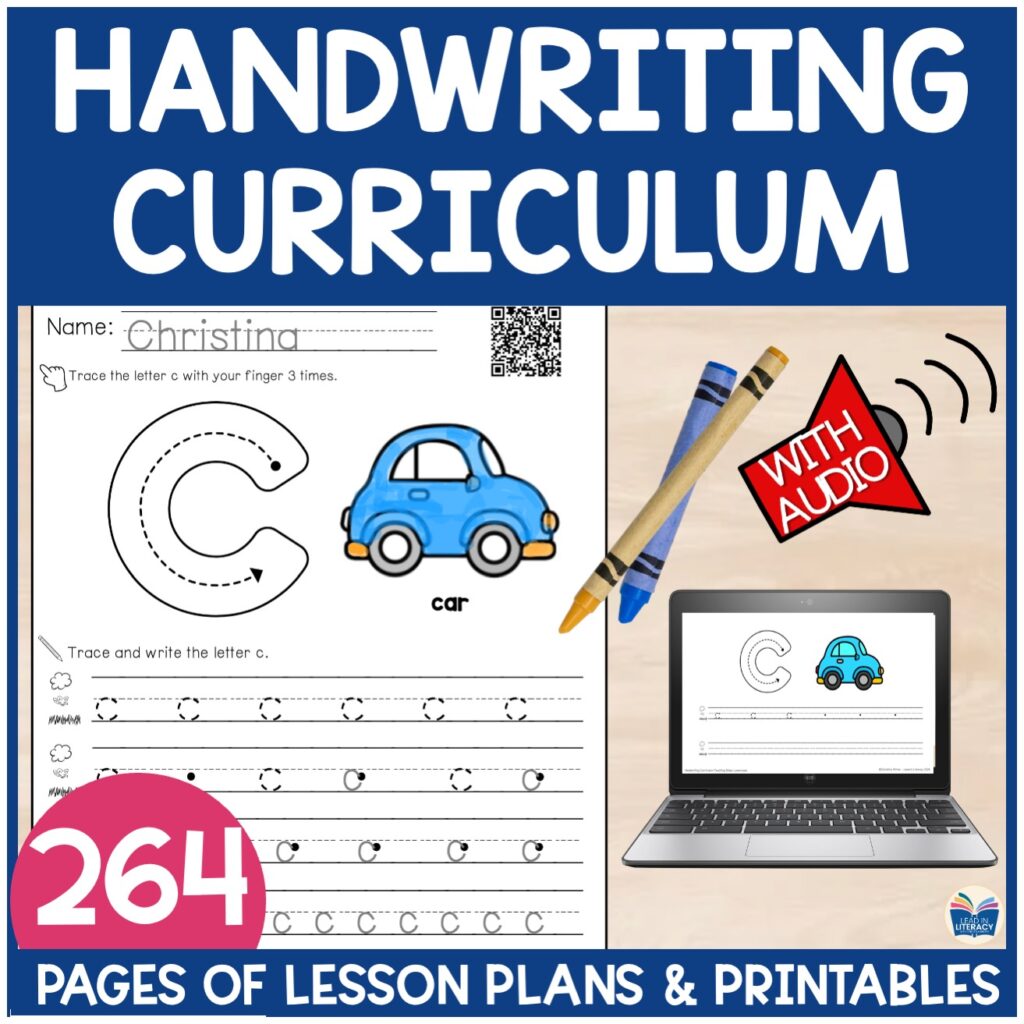
It includes research-based, science of reading aligned, step-by-step lesson plans for all lower and upper-case letters. You’ll also get teaching slides and a variety of student handwriting printables so you can easily differentiate and meet your students’ needs. There are teaching posters to support correct pencil grip and letter formation and much MORE!
It is a resource that can be used for daily handwriting whole-group practice, morning work, small-group interventions, and/or centers.
Let’s take a closer look at all that is included in the resource!
✏️ Explicit Handwriting Lesson Plans
This resource includes explicit lesson plans for each lower and upper-case letter. The lowercase lessons follow a research-based scope and sequence and group lowercase letters by similar strokes. The uppercase letters follow our SoR-aligned phonics scope and sequence.
Each lesson uses multi-sensory techniques, clear visual cues, and engaging fine and gross motor warm-ups to help students build a solid foundation. begins with gross motor activities that prepare students to write.
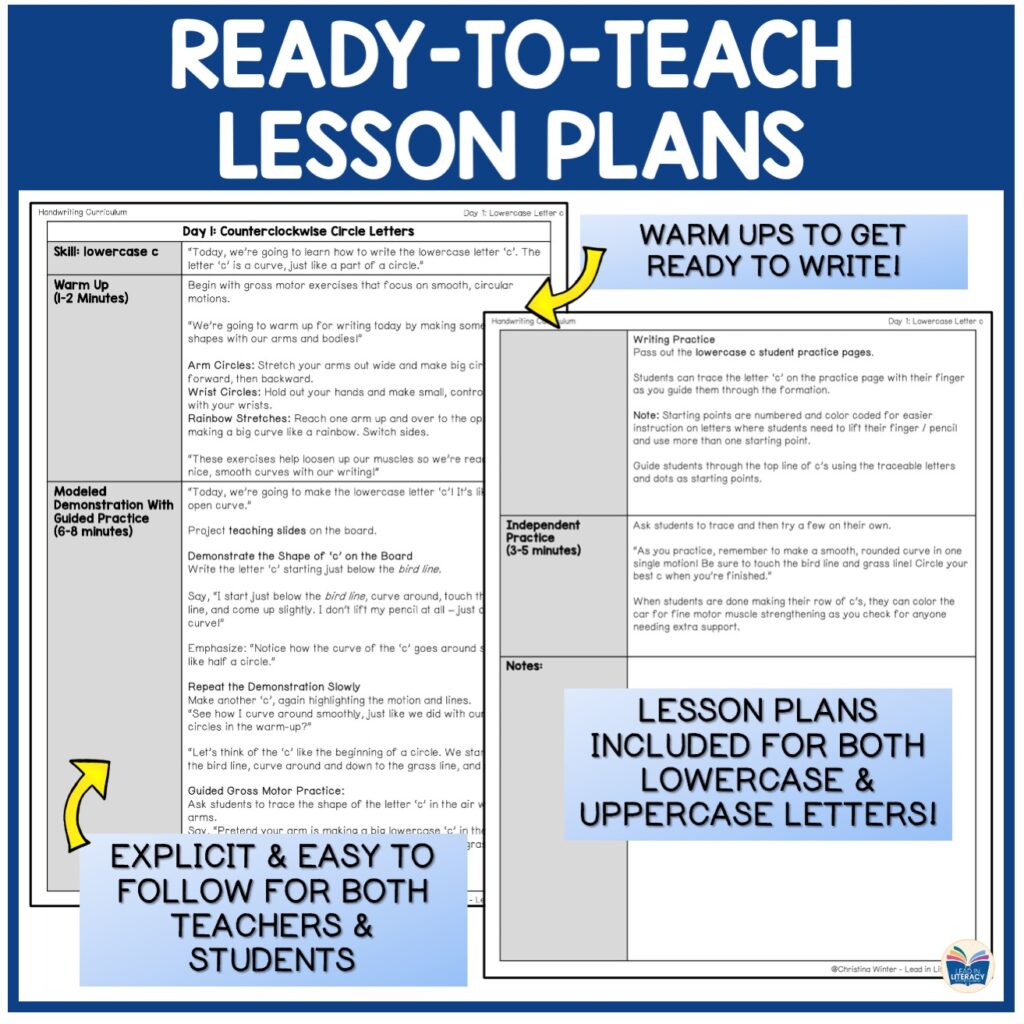
It then moves to an explicitly modeled demonstration with guided practice. The lessons include teaching slides that match the student practice pages. You can use these slides to model letter formation and guide students through their worksheets.
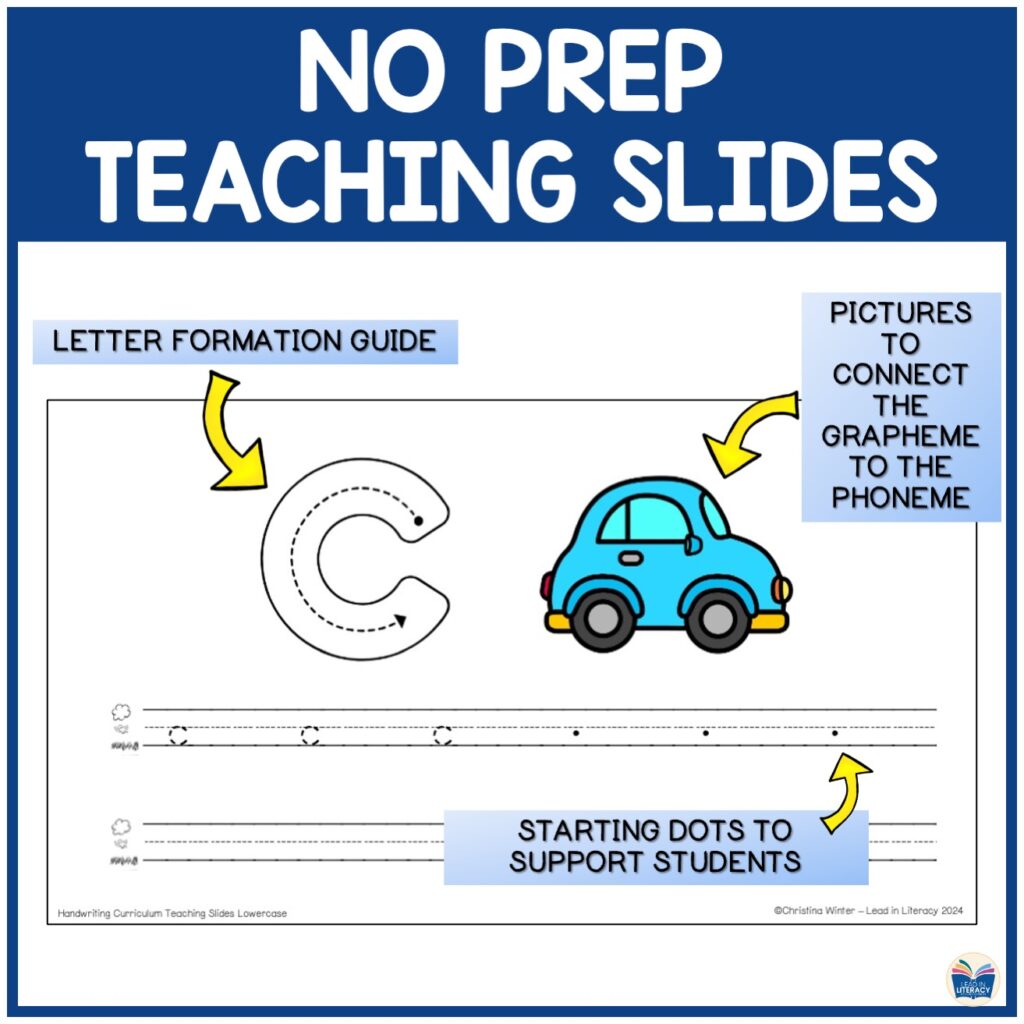
Finally, students then have a chance to try forming the letter on their own while you provide corrective feedback, as needed.
Each lesson is about 10-15 minutes long. This is the amount of time shown to prevent future difficulties in composition and writing fluency.
✏️ Handwriting Printables for Independent Practice
The resource includes 3 different printables for you to choose from.
First, there is a printable that focuses only on lowercase. Each one includes a letter formation guide, as well as a picture that helps students connect the letter to the sound it makes.
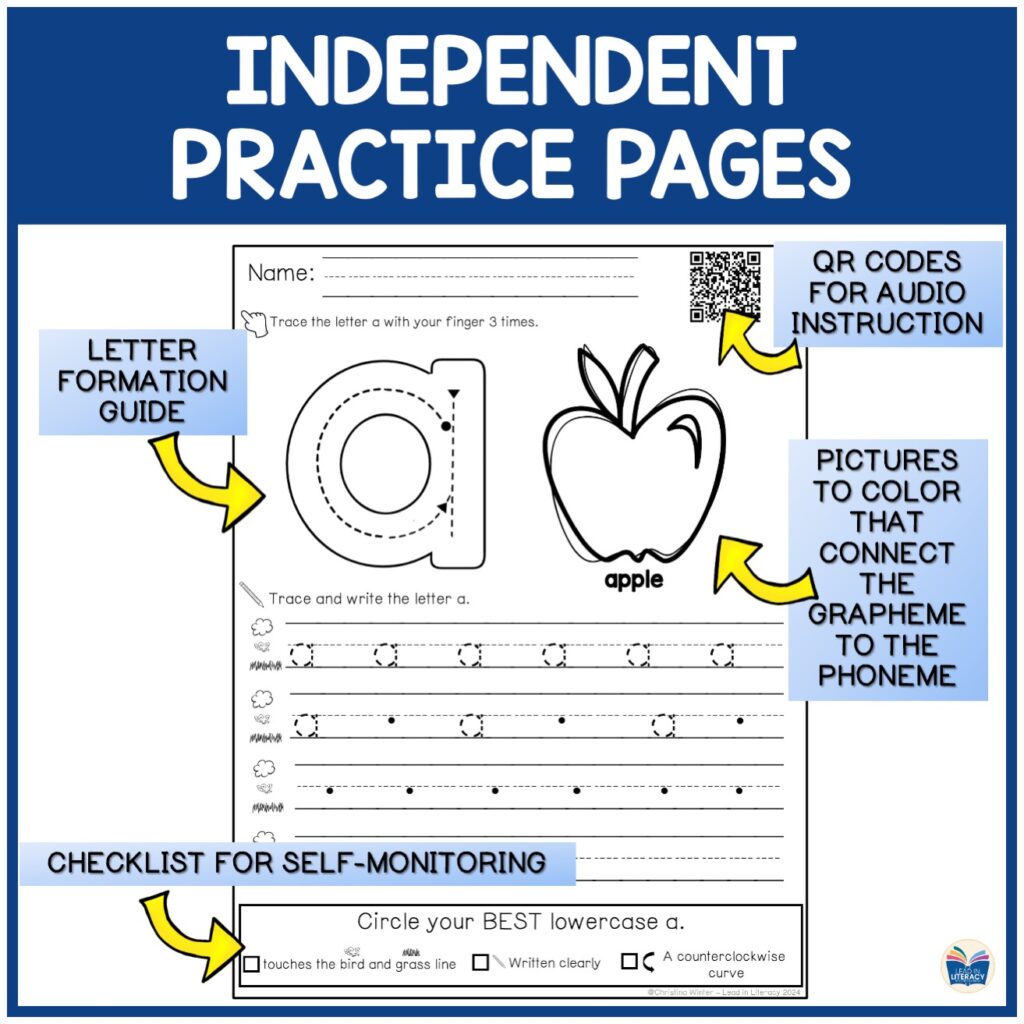
Students can scan the QR code found on each printable to receive audio instructions. This is particularly helpful for those students who need more review and support. These scaffolds of support build student confidence and help ensure mastery of the letter.
We know that for students to master the skills we teach, they need plenty of opportunities for review and practice. That’s why we’ve included additional independent printables that review the lowercase letters.
Finally, to support your phonics instruction, you’ll find handwriting printables that integrate phonics skills! These printables follow our SoR-aligned phonics scope and sequence. They teach each proper uppercase and lowercase letter formation while also providing a review and support of the letter sound.
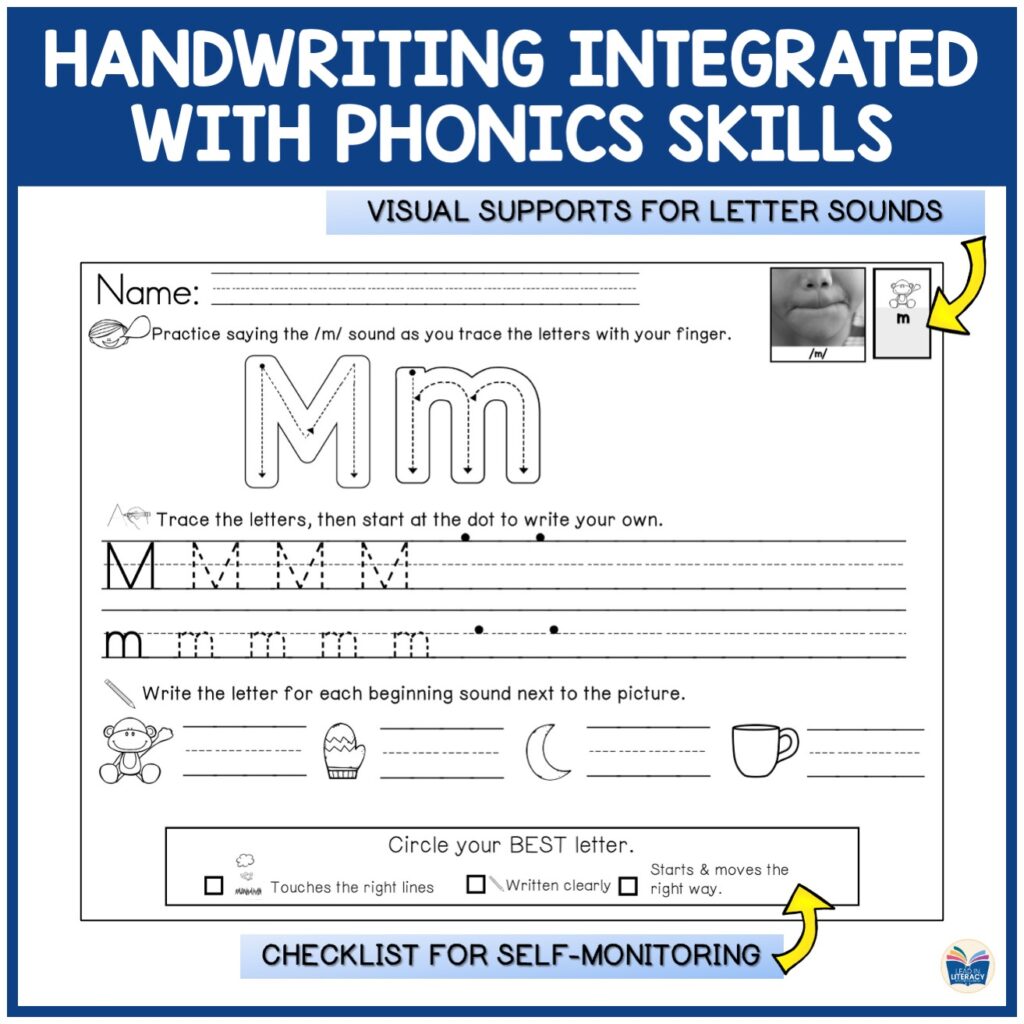
✏️ Handwriting Posters
Hang these teaching posters to support students in their independent handwriting practice!
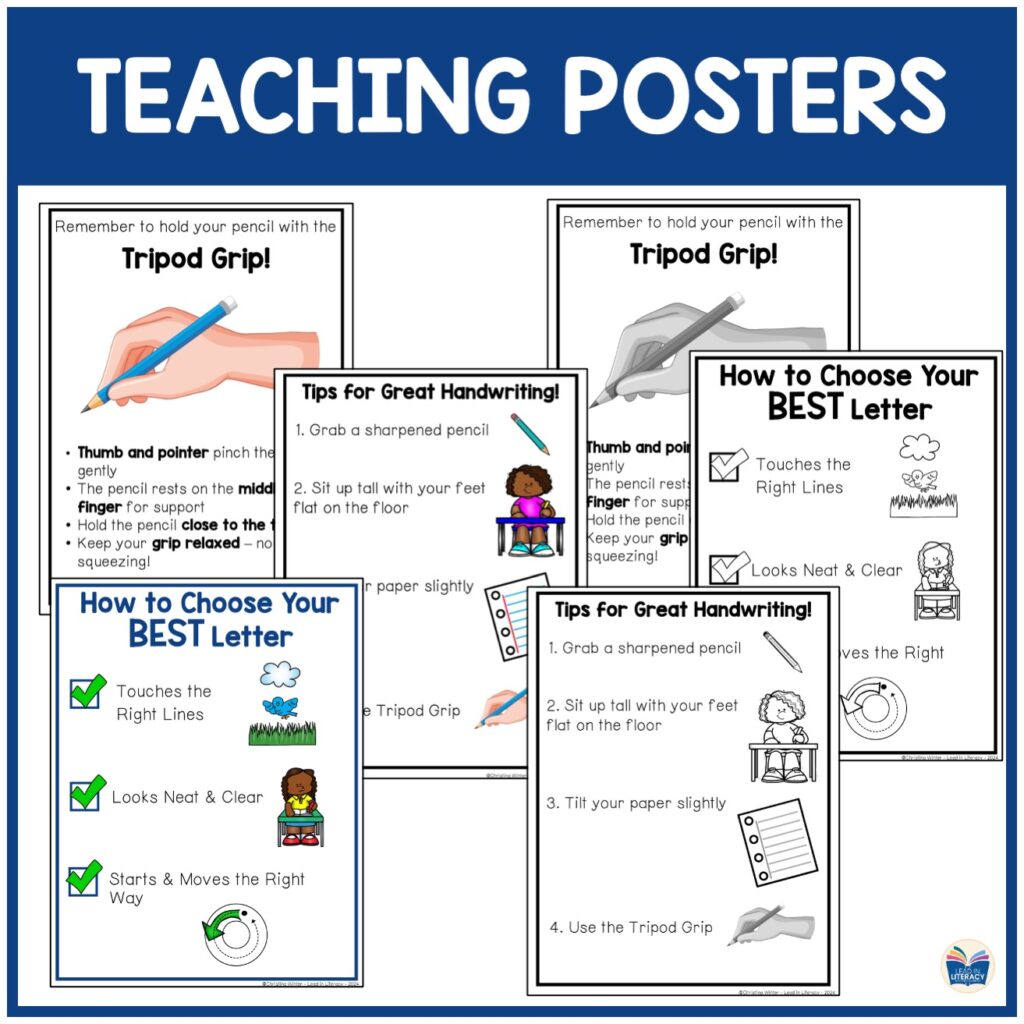
Research tells us that rapid, legible, and comfortable handwriting supports writing production and that roper grip, posture,and stroke patterns are foundational and hard to remediate later. These posters help students self-monitor and independently practice their formation with proper form.
✏️ Handwriting Certificate of Completion
Finally, celebrate your students’ hard work with these auto-fill certificates! Simply type in your info and your student names one time and the certificates will automatically populate. Students will love the special recognition and you’ll love how easy it is to create them!
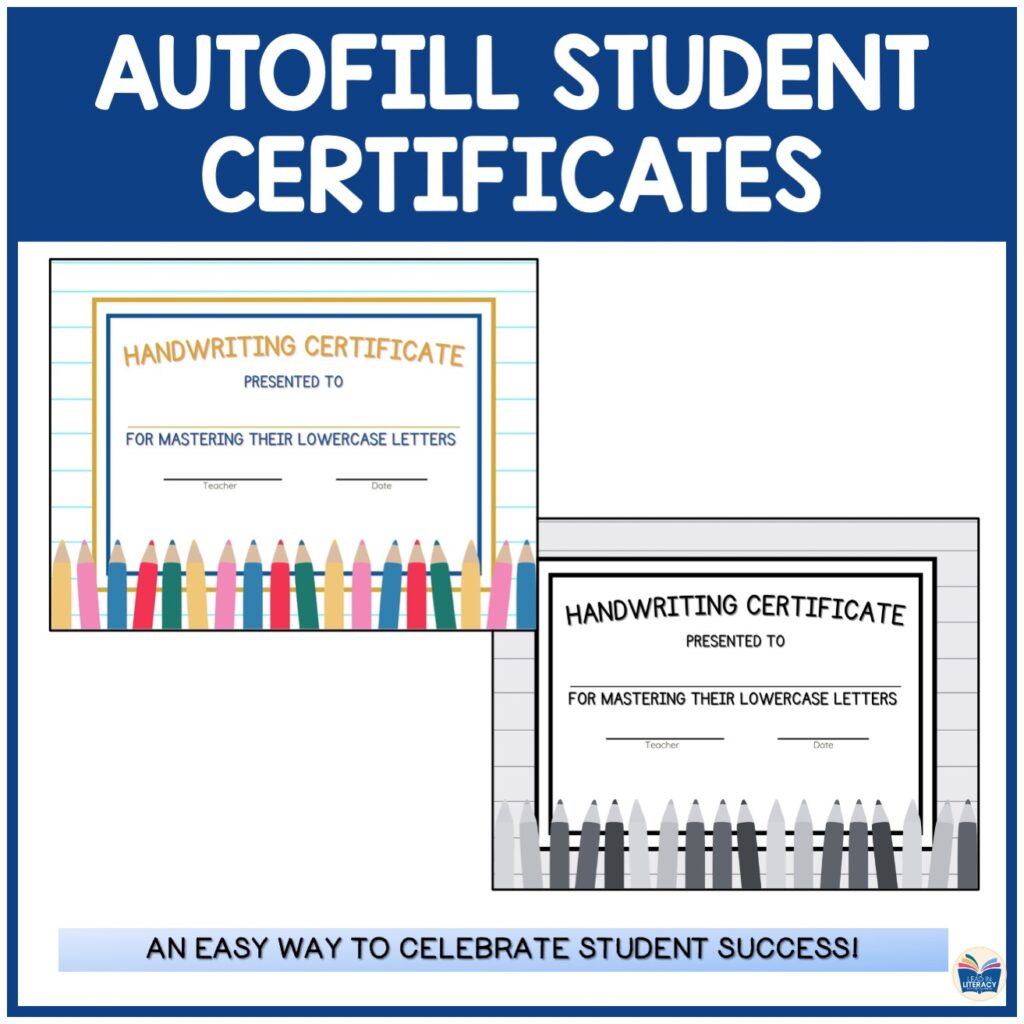
FREE Handwriting Lessons and Student Printables
If you are ready to begin implementing handwriting instruction in your classroom, grab this FREE sample of the Handwriting Yearlong Curriculum!

I hope the information and resources I’ve shared here today help you understand the importance of systematic, explicit handwriting instruction. Following these practices will help your students build the foundational skills they need for writing fluency and literacy success!


